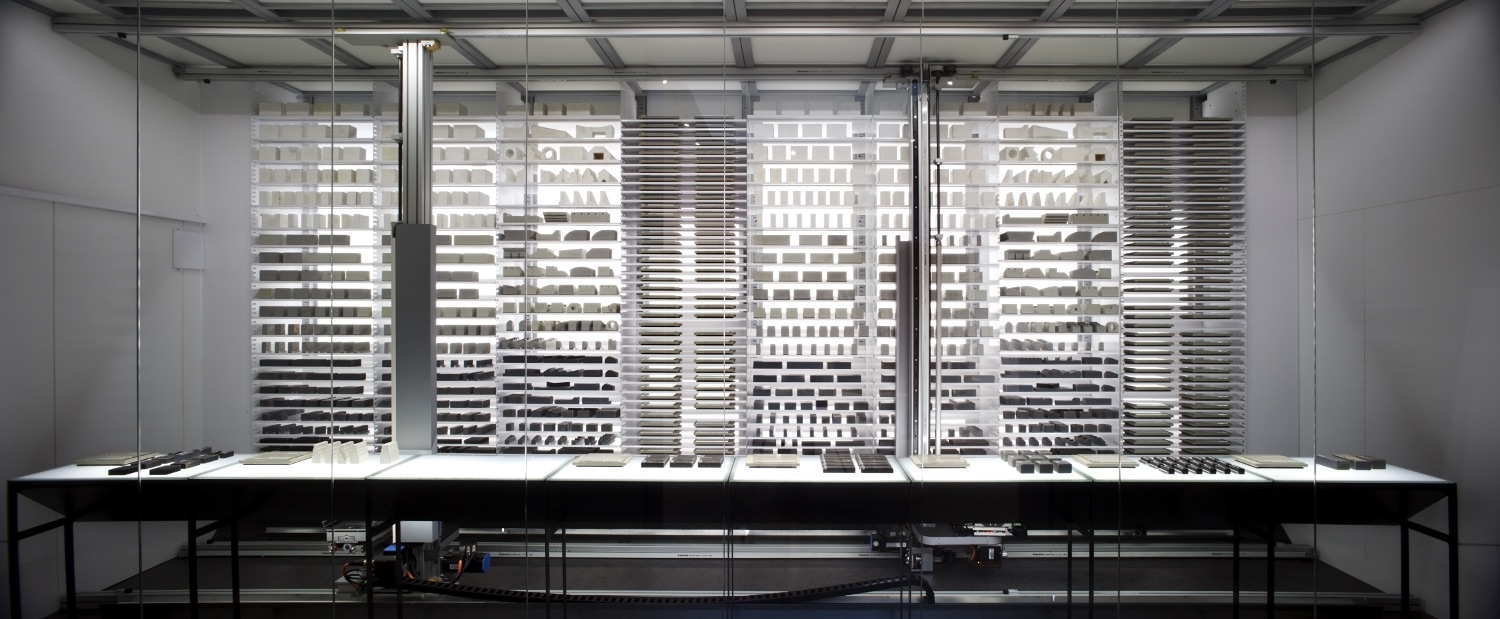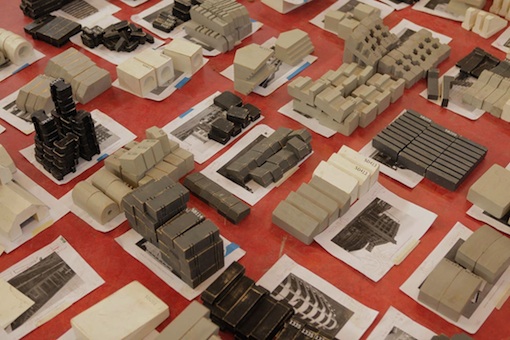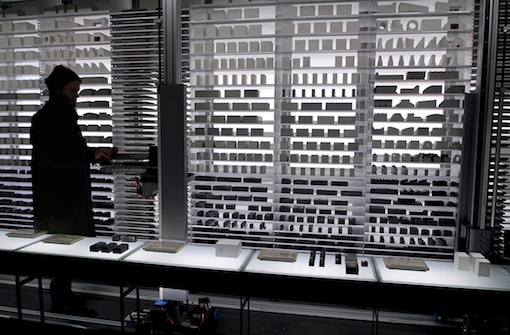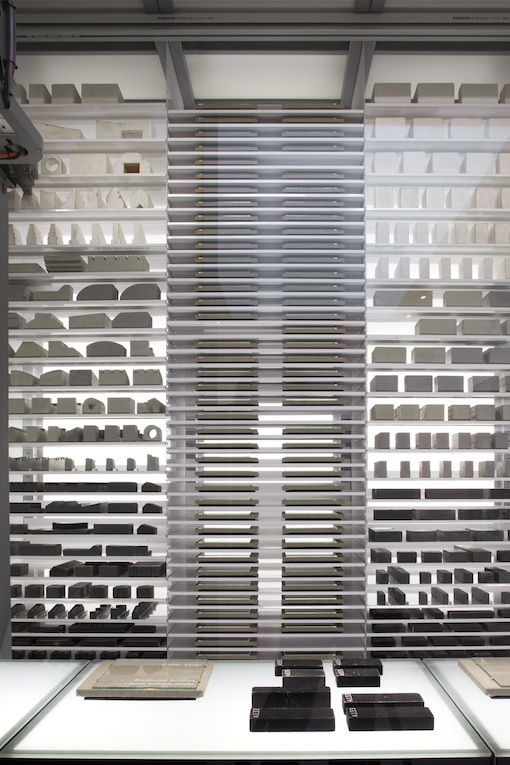
Negative Space: A Scenario Generator for Clandestine Building in Africa
Wooden blocks, robotics, glass, canvas, stickers
300 x 811 x 380 cm
Installation view at the Belgian Pavilion at the 56th Venice Biennial
Photo: Alessandra Bello
Negative Space: A Scenario Generator for Clandestine Building in Africa, 2015
James Beckett’s ‘Negative Space: A Scenario Generator for Clandestine Building in Africa’ refers to so-called clandestine building1 practices across Africa, whereby residents expand on their living spaces by building illegal extensions onto existing architecture. Aesthetic gestures, for example, are quite typical of Modernism- designs that don’t capitalize on the full volume a structure can offer. The cantilevered roof, the extended balcony, floating facades and large, decadent lobbies – all these features are potential space to be re-appropriated, to be bricked up and put to use for the individual and collective good.
The installation is an “automated archive”, which generates architectural scenarios for such clandestine buildings. This archive contains a collection of over 200 photographs of architecture from across the continent, along with a collection of thousands of wooden building blocks, each unique. A set of two pharmaceutical robotic arms continuously, reminding of retrieval machines used in warehouses, continuously shuffle these blocks to create portraits of specific buildings.

Wooden architectural models and reference photos
Aged wood, paint and stickers
Dimensions variable
Photo: Jochem Sanders

Wooden blocks, robotics, glass, canvas, stickers
300 x 811 x 380 cm
Installation view at the Belgian Pavilion at the 56th Venice Biennial
Photo: Alessandra Bello

Wooden blocks, robotics, glass, canvas, stickers
300 x 811 x 380 cm
Installation view at the Belgian Pavilion at the 56th Venice Biennial
Photo: Alessandra Bello

